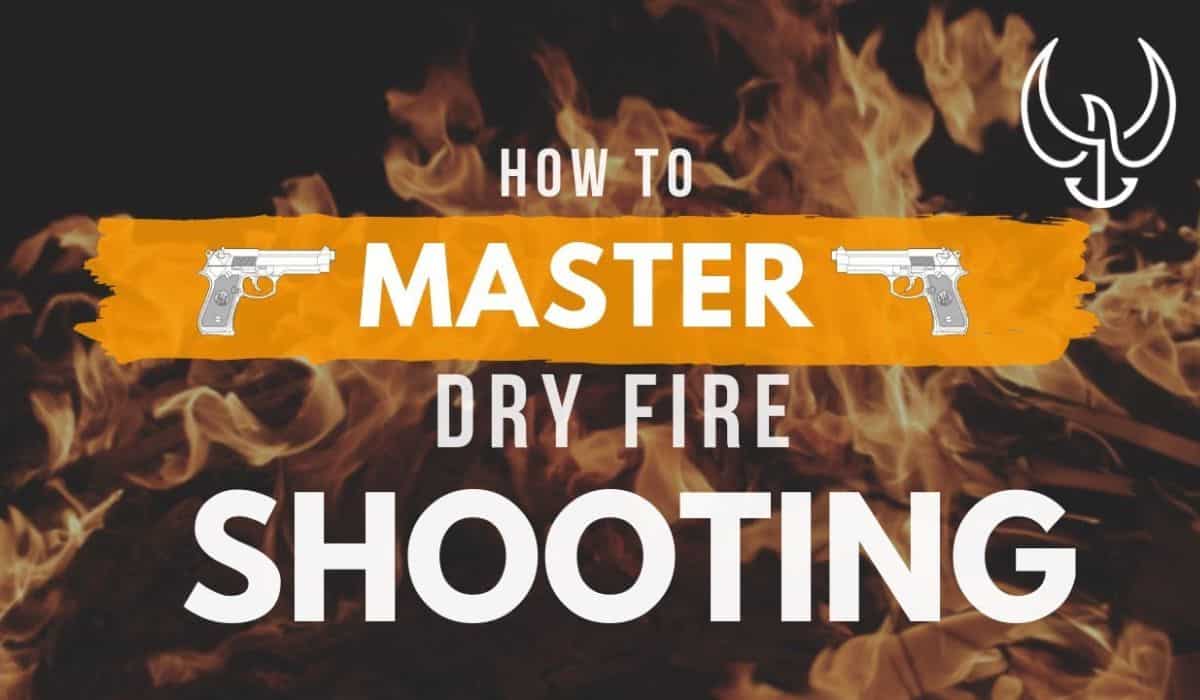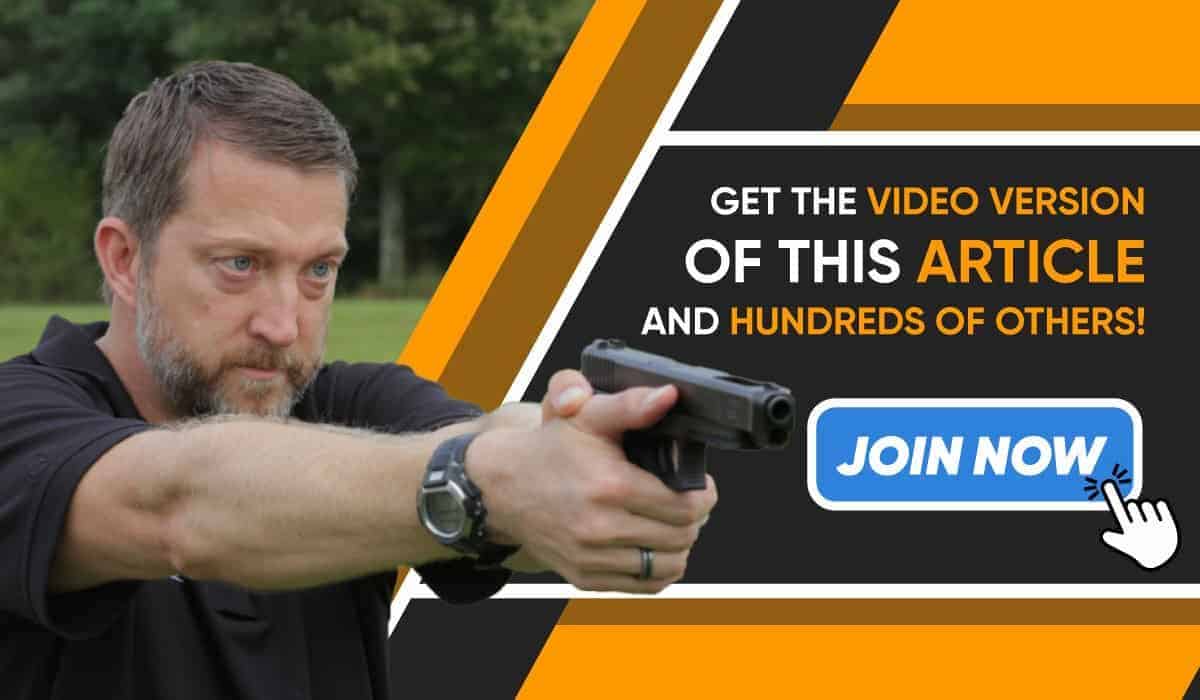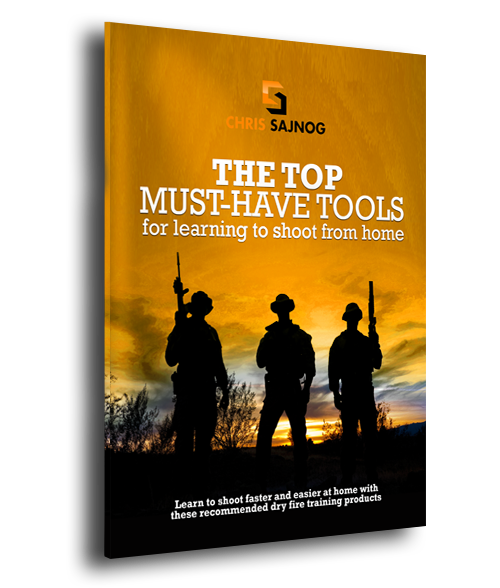Dry Fire Training Tips – 10 Steps to Proper Dry Fire Training
Hey guys, what’s going on. I’m retired Navy SEAL Chris Sajnog and founder of The New Rules of Marksmanship training system. In this post, I’m going to discuss 10 Dry Fire Training Tips to help you in your dry fire training.
What Is Dry Fire Training?
I get the question all the time, “What is dry fire training?” When most people hear the term dry fire training, they just think about pulling the trigger like that is the only thing you can do. Maybe we just need to change the term that we use.
I talk about dry weapons manipulation or dry weapons training because when I talk about dry fire training, I talk about anything that helps make you a better shooter. It could be:
- Working on your grip strength
- Working on your eyesight
- Meditation.
So you’re working on that brain power to make you a better shooter. Anything that helps make you a better shooter is dry fire training. So that is my definition of it.
Dry Fire Training Tips
With that said, let me give you 10 tips that are going to help you every time you do dry fire training that involves a firearm.
#1 Come Up With A Plan
So step number one is to always come up with a plan. If you don’t know what you need to work on, you’re really wasting your time, I don’t want you just to pull out your gun and start pulling the trigger.
Hopefully, you have a training notebook in which you’re logging all your training in. You should be able to look at that and go, “Okay, I need to work on drawing my pistol.”
If you can isolate exactly what you need to work on and write it down, you’ll be able to work on that and you’ll be able to progress in your shooting a lot faster.

#2 Designated Area
So the next thing I want you to do is to make sure you go into a room by yourself. Hopefully, you have a place in your home where you can be alone.
When you go into this space, your body knows, “Hey, this is where I do my dry fire training.” Your body is going to start getting ready for that. So go into this place and make sure that it’s quiet and nobody’s going to disturb you.
#3 Turn Off Electronics
So the next thing I want you to do is to make sure that you turn off your cell phone. Turn off your iPad, turn off your computer, and turn off your ps4. If anything that’s going to be a distraction, make sure you turn it off.
This is so you can focus on what you’re doing and your dry fire training.
#4 Clear Out Your Weapon
So number four is you want to make sure that you clear out your weapon. Both physically and visually which is also going to involve your magazines. So check all your magazines. Or if you’re wearing any gear or equipment that could possibly have ammunition in it, you want to make sure that you check those and double-check them.
When I say dry fire training, and I hear somebody else say, “Oh, I had a negligent discharge or an accidental discharge when I was dry firing.” Well, guess what? You weren’t dry-fire training!
When you clear out all your gear, put it in another room and make sure that there’s no way that it could possibly get into your gun. At least make sure that you have a container that you can lock.
#5 BulletProof Background
Alright, number five in these dry fire training tips is to make sure you have a target with a good solid bulletproof background. I have a couple of bulletproof vests that I will actually set up and use for my dry fire training.
Now you may not have something like that, but some good alternatives are a brick wall or a couple of bricks that you can set up and put your target in front of.
#6 Mentality
Number six is like a mental thing that I want you to do. Say to yourself, “I am dry fire training right now.” There have been times when there have been accidents that happen and they’re tragic.
This happens when somebody goes to practice dry fire training and something happens and then they end up having a negligent discharge. I don’t want that to happen to you.
#7 List Of Techniques
Number seven is just to go through that list of the techniques that you want to work on. Don’t just go jumping around and randomly training different things you want to.
Practice what you need to work on the most at this point in time in your training because it changes every day. That’s why it’s critical to have a training notebook.

#8 Correct Your Mistakes
Number eight is if you make a mistake when you’re training, I want you to go back one step and correct it. If you continue doing something wrong, you’re reinforcing bad habits. I can give you an example right here.
Let’s say that I’m practicing doing a magazine reload, and I go to grab my magazine and bring it up and I just miss it. I’m going to go back and now I’m going to do that again properly and make sure that it goes in properly that time. So whatever it is, go back one step so that you’re doing it perfectly every time.
Now, this doesn’t apply if you’re doing situational training, like room clearing or something like that. In situational training like that, you want to learn from those mistakes.
#9 Time Length
You just want to make sure that your dry fire training session should generally be between five and 20 minutes. You don’t want to sit and work with your firearm so much that you start getting tired. As long as you can maintain focus, that is going to be the perfect time for you.
So if you’re starting to get distracted, or you’re starting to get frustrated, just go ahead and stop. There’s going to be another day to train and you want to make sure that you’re training correctly each time.
#10 Review Your Training
Alright, so last up number 10 is to make sure that you look at your training. Look at what you did right and what you need to work on. Then put that in your training notebook.
This is critical because if you’re not writing down what you do, the next time you go to train, generally you’re just going to forget what you needed to do. Maybe you will make the same mistakes that you made last time. So make sure you’re logging all your training and keep that notebook with you so you can review it all the time.
I hope these dry fire training tips have helped you. Hope you understand a little better what dry fire training is and how to do it. Until next time, keep paving your path to perfection.



